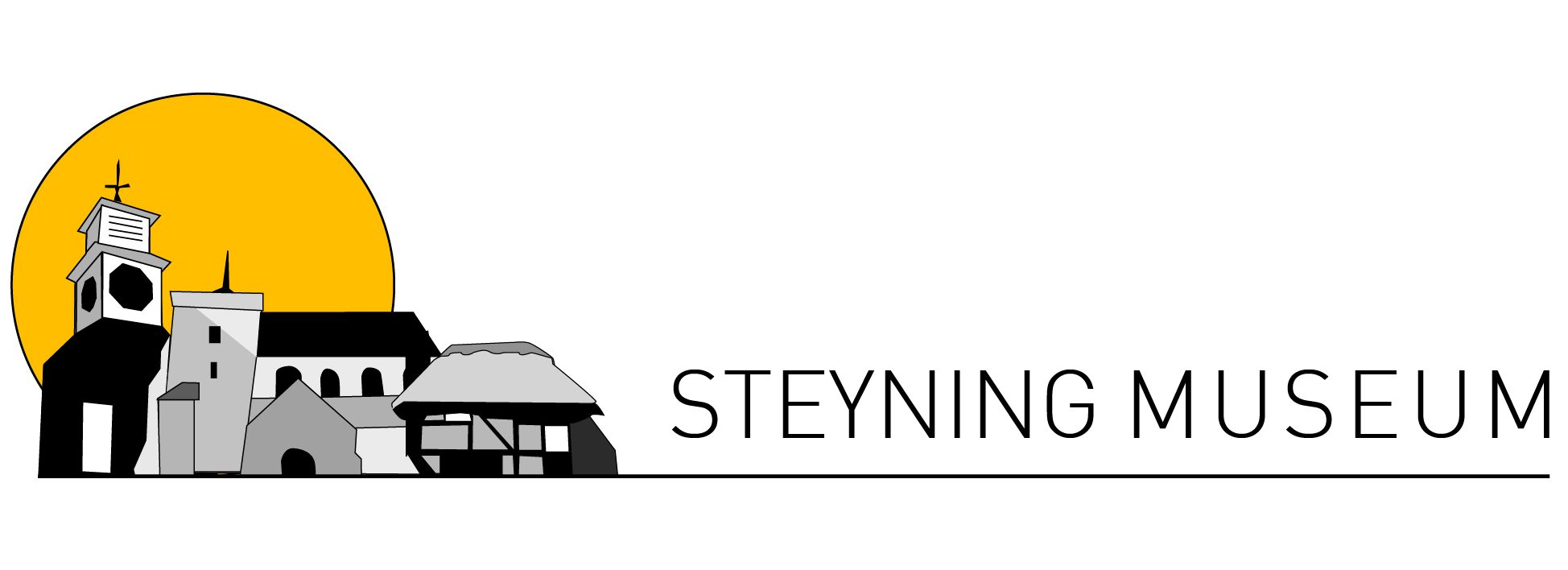The Steyning Martyr
by Doug Thompson
From a Report in John Foxe’s Book of Martyrs
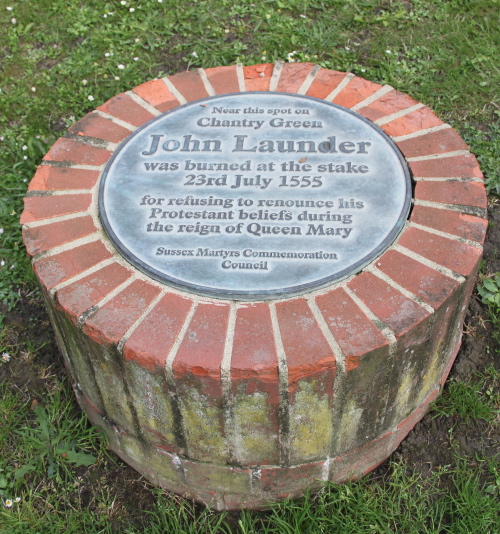
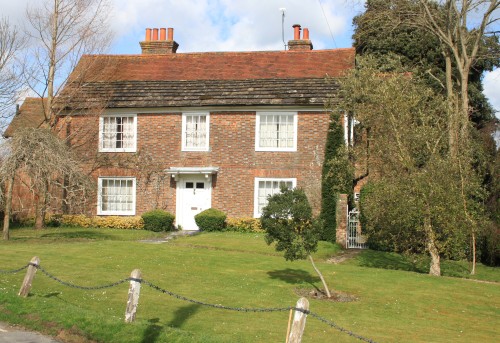
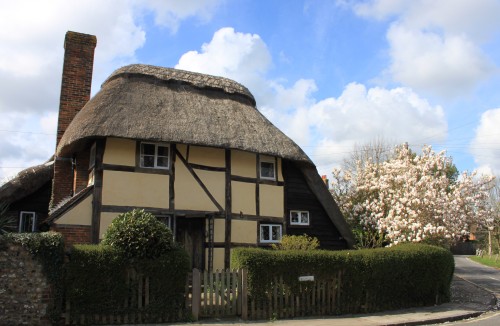
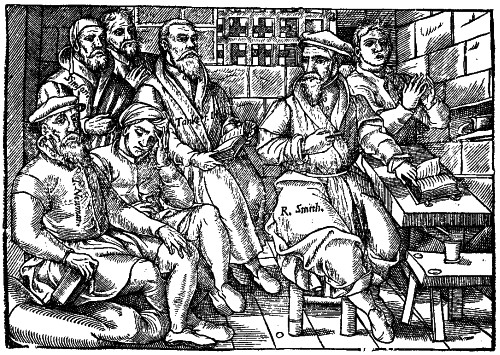
One of the darkest days in Steyning’s 1200 year history was 23 July, 1555. On this day John Launder, who had no other connection with Steyning, was burnt to death on Chantry Green for his religious beliefs. His execution was intended to terrify and silence local people who may have cherished similar views.
Queen Mary I, also known as Bloody Mary, came to the throne of England in 1553. During the five years of her reign, she re-established the Roman Catholic Church in an effort to reverse the Reformation of her father, Henry VIII and the further Protestant reforms of her brother, Edward VI.
Those who refused to reverse their religious beliefs (even after threat and torture) were tried, excommunicated and, if they had survived the horrors of imprisonment, burnt to death. It is thought that up to 284 Protestants were burnt at the stake during Mary’s reign, 88 of them from Sussex.
When Mary’s sister, Elizabeth I, came to the throne in 1558, the people were required to reject papal authority once again. Then it was Roman Catholics instead of Protestants who were terrorised by public executions, usually on charges of treason. The Treason Act of 1790 finally brought an end to death by burning as a form of capital punishment.
John Launder (1530–1555) was a Protestant martyr, executed in 1555 during the period of religious persecutions in England.
Launder was a tenant farmer from Godstone in Surrey. He was born shortly before Henry VIII’s break with Rome and the creation of the Church of England. Near the end of October 1554, when he was twenty-five years old, he visited Brighton on business for his father.
At this time, England was officially a Roman Catholic country. Queen Mary, daughter of Henry VIII, had restored the old religion after the Reformation of her father and the Protestant reign of her half-brother, Edward VI. During his visit to Brighton, Launder attended a prayer meeting at the home of Dirrick Carver. At this meeting the gospel was read and a service performed in English, neither of which was permitted by the Catholic authorities.
The meeting was interrupted by the sheriff of Sussex, Edward Gage, who arrested Launder, Carver and others. Following a preliminary examination by the Queen’s Council, they were sent as prisoners to Newgate in London to await a full trial before Bishop Bonner. After several months in prison, the investigation found that both Carver and Launder confessed they had taken part in the service as described.
Launder made many other statements which sealed his fate as a heretic in the eyes of the Catholic Church. He claimed that the bread and wine received at mass did not transform into the body and blood of Christ but persisted as simply bread and wine when consumed. He received the bread and wine only as a remembrance of Christ’s death and passion. He believed that the mass as celebrated was abominable, directly against God’s word and nothing said in it was good or profitable. He did not believe that confession needed to be heard by a priest, but that a person should confess his sins to God alone. He said that no priest had authority to absolve sins. Rather, a man who sinned should be sorry for his offence and do the same no more.
These confessions were recorded in writing and signed by the prisoners. Bishop Bonner read the statements back and asked if the men truly confessed these articles. After long ‘persuasions’ it was demanded of them whether they would still stand by their answers. Both men stood firm with Launder saying: “I will never go from these answers so long as I live.”
Ten days later, on 10th June, the men appeared before the bishop again at St Paul’s Cathedral in London. Launder and Carver once again confirmed that they remained constant in their beliefs. They were then delivered to the secular authorities for execution.
Carver was taken to the town of Lewes to be burned on 22nd of July. On the following day Launder was brought to Steyning, where he also was burned.
It is generally believed that his place of execution was at Chantry Green and a memorial to John Launder, provided by the Sussex Martyrs Commemoration Council, stands near this spot, between Steyning Museum and the Library.
The woodcut identifies four men held in Newgate prison who were condemned by Bishop Bonner in 1555. They were John Newman, Robert Smith, George Tankerfield and John Simson. Although not named, John Launder may be the young man shown on the right.
A letter from Robert Smith, to his wife Anne, names John Launder as a fellow prisoner:
I sent you by Master Alexander a purse with money. I have certain tokens for you, sent by my prison-fellows to you, that is, from Master Hawkes twelve pence, from Master Simson twelve pence, from his wife four pence, from Master Wats five new groats, from Master Ardeley twelve pence, from Master Bradford twelve pence, which men be all gone to death, except Master Bradford; he abideth still. There are also gone to death Nicholas Chamberlain, Thomas Osmond, William Bamford. There are also condemned this Monday, Dirick Carver, Thomas Iveson, John Launder; and William Vassay is reprieved. Pray to God to have mercy upon his people, and bid my brother, if he can conveniently, come down on Monday next; if he cannot well do it, let him abide at home. Have me heartily commended to your parents. I have sent each of them a token, a bowed groat, and desire them for God's sake to help us with their prayers. Have little Katherine in mind. Commend me unto all good friends. Continue in prayer. Beware of vanity. Let not God be dishonoured in your conversation, but, like a good matron, keep your vessel in holiness. The peace of God rest with you for ever. Amen.
My brother Iveson sendeth to you a token, to your mother a token, and to Katherine a token, three pence. John Launder sendeth you a piece of Spanish money. Father Herault, a piece of six pence. W. Andrews sendeth you a rase of ginger, and I send your mother one, and a nutmeg. I send Katherine comfits, for a token, to eat. I have sent you a key-clog for a token. Your husband, ROBERT SMITH
All the information used in this article is derived from
Foxe’s Book of Martyrs pp268-269.
There is an extensive website devoted to Foxe’s Book of Martyrs and the many editions published from 1563, shown with a reference to the original title:
John Foxe’s The Acts and Monuments Online
